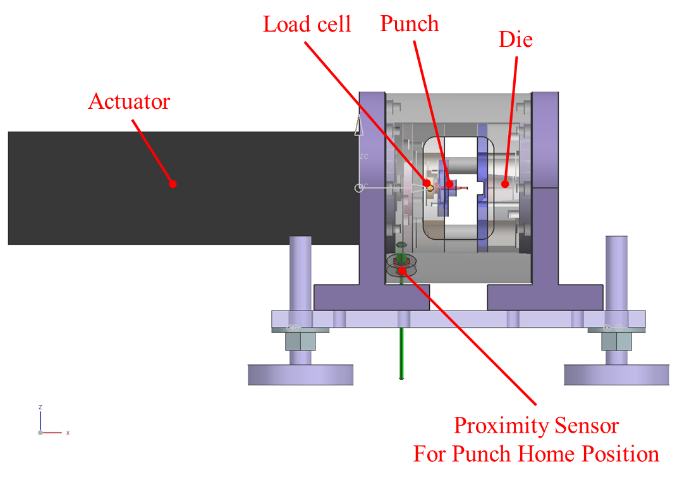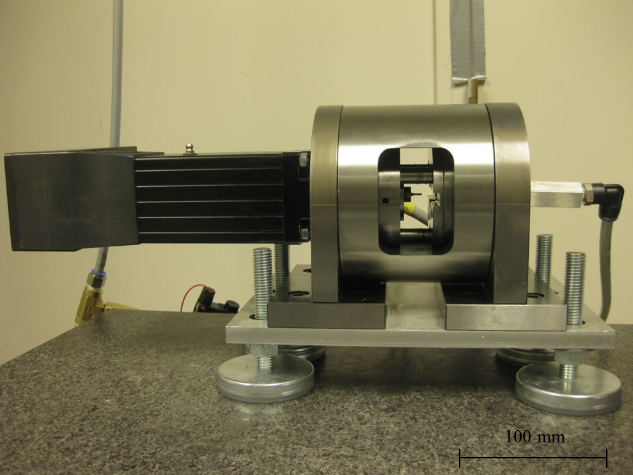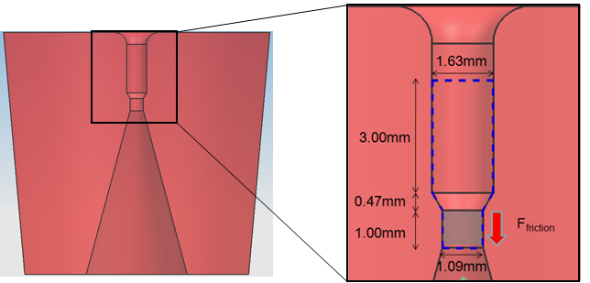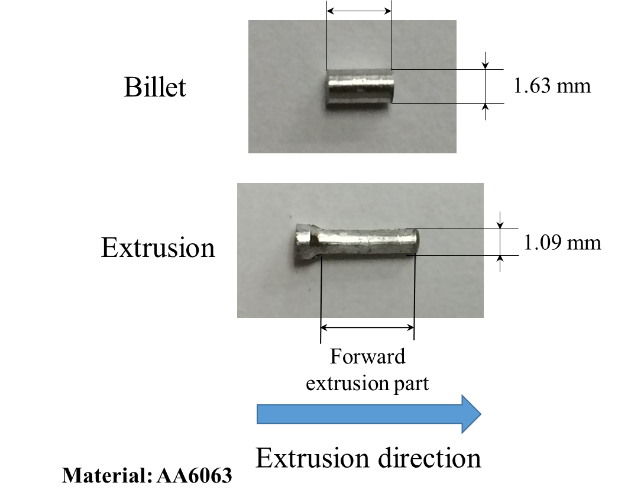Motivation
Fig. 1. Schematic view of the micro-extrusion machine
Miniaturization has shown a strong and steady growth in many areas, for instance, electronic devices, biomedical devices, micro systems, automotive components, telecommunications, and energy generations. One of the commonly used processes in micro-forming is micro-extrusion.
Micro-extrusion is advantageous in manufacturing because it allows high production rates, is suitable for mass production, produces near-net-shape components, and allows for 3-dimensional part geometry. When parts are scaled down, the so-called ‘size effect’ occurs when the size of the grains relative to the specimen size increases, which reduces the yield or flow stresses of the material. This effect has also been observed in the micro-extrusion process. Due to the fact that high-speed and mass production are always demanded in industry, strain rate effect must also be considered.
Fig. 2. Photograph of the experimental setup for micro-extrusion
As a result, the micro-extrusion machine was developed to investigate size and strain rate effects in the micro-extrusion process in order to understand, predict, and simulate the final products.
Research Work
The main focus of this research was to study the grain size effect, the strain rate effect and the tribological effect in the extrusion of Brass and Aluminum samples. The results of this study will advance our knowledge by offering insight about how materials behave under those stated effects. Knowing the rationale behind the material behaviors, and the effects, will efficiently improve the manufacturing processes of micro-parts.
|
Fig. 3. Design of segmented die |
Fig. 4. Shape of the billet and extrusion |




